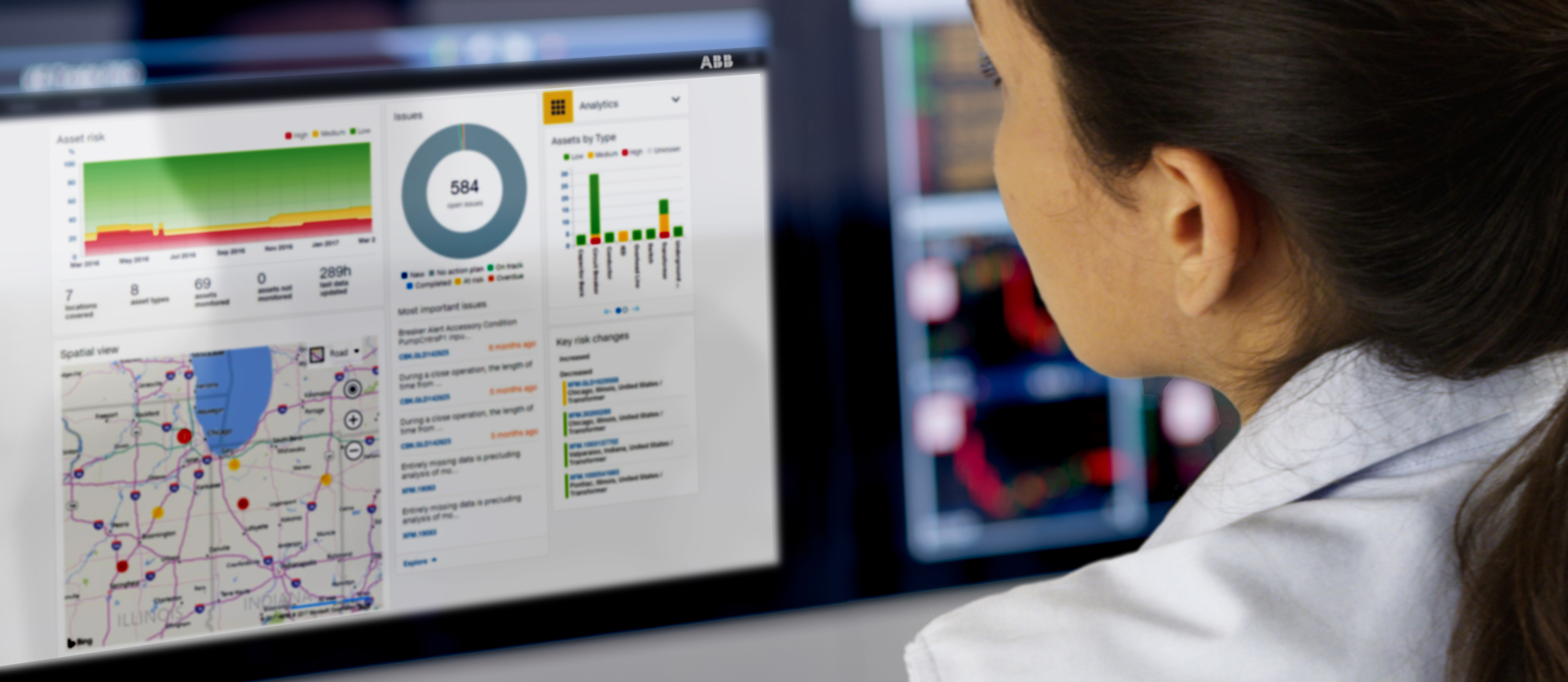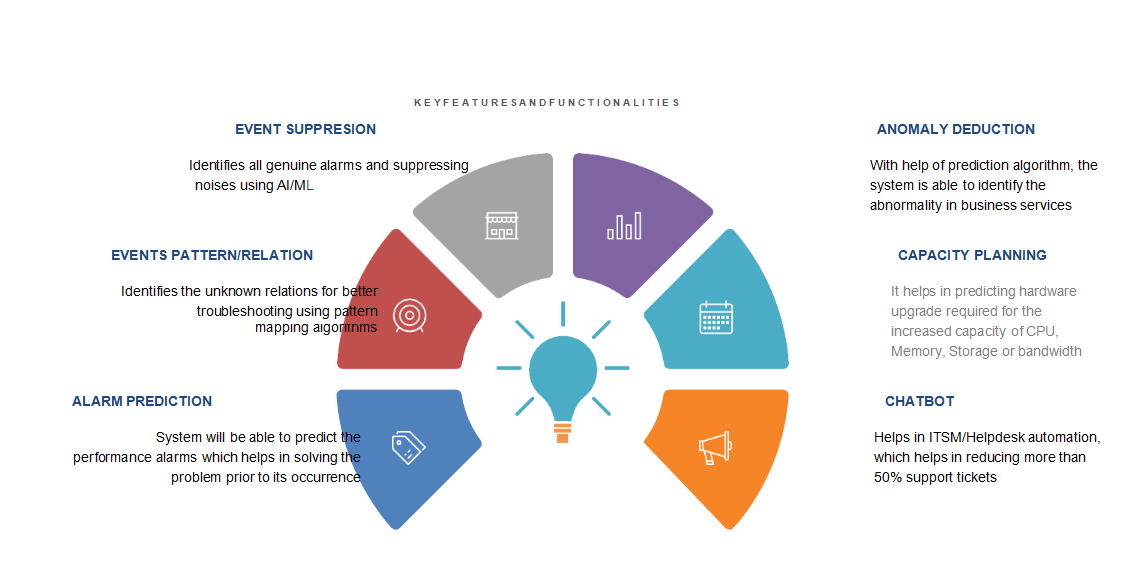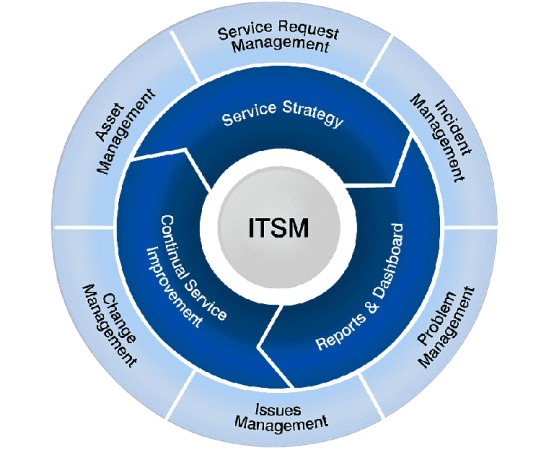Expertise
Innovation
Customization
Customer Satisfaction
Expertise
Our team consists of highly skilled professionals with extensive experience in NextGen Software Development Services. With a proven track record, we have successfully delivered projects across various industries, driving innovation and business growth.
Additionally, we offer GxP Services in UAE to ensure your processes meet regulatory standards, and as a trusted Cyber Security Company in UAE, we provide robust security solutions to protect your digital assets.
Innovation
Our team consists of highly skilled professionals with extensive experience in NextGen Software Development Services. With a proven track record, we have successfully delivered projects across various industries, driving innovation and business growth.
Additionally, we offer GxP Services in UAE to ensure your processes meet regulatory standards, and as a trusted Cyber Security Company in UAE, we provide robust security solutions to protect your digital assets.
Customization
Our team consists of highly skilled professionals with extensive experience in NextGen Software Development Services. With a proven track record, we have successfully delivered projects across various industries, driving innovation and business growth.
Additionally, we offer GxP Services in UAE to ensure your processes meet regulatory standards, and as a trusted Cyber Security Company in UAE, we provide robust security solutions to protect your digital assets.
Customer Satisfaction
Our team consists of highly skilled professionals with extensive experience in NextGen Software Development Services. With a proven track record, we have successfully delivered projects across various industries, driving innovation and business growth.
Additionally, we offer GxP Services in UAE to ensure your processes meet regulatory standards, and as a trusted Cyber Security Company in UAE, we provide robust security solutions to protect your digital assets.
Best IT Operations & Management Solutions (AIOMs) In UAE
NexIT offers a range of AI powered IT Operations & Management Solutions, including Professional Service Automation (PSA) and Remote Monitoring & Management (RMM).
Our PSA capabilities focus on enhancing IT service quality through Artificial Intelligence (AI) led service desks, automated project management, contract management, and billing management.
Our RMM services aim to improve network reliability and asset ROI, offering features like remote monitoring, asset management, desktop management, and advanced analytics. NexIT integrates customer success and ITOps modules for real-time monitoring, proactive support, and enhanced communication channels, aiming for seamless client management and service delivery.

Talk With Expert
IT Operations & Management Solutions (ITOM)
Asset Management Solution
IT Asset management is the process of ensuring that hardware and software assets are effectively accounted for, deployed, maintained, upgraded and disposed of. Our Asset Management is a fully integrated one stop platform for SMEs, large enterprises, and telecom companies to manage asset lifecycles. Centralizes asset management by giving full control with a single powerful platform. You can optimize asset usage, increase asset lifetime, improve deployment, and ensure total. Eliminate spreadsheet dependency with a low-code platform that helps you unearth potential costs, make smart purchasing decisions, and avoid unnecessary expenses.


What sets us apart as IT Operations & Management Solutions?
Our Asset Management comes with an interactive Ul-friendly dashboard that provides real-time tactical insights. Track critical financial, compliance & legal needs while measuring overall asset ROI. You also get access to an inbuilt incident & fault management system – with multi-channel support and self-service options like chatbots. Our asset management solutions are equipped to manage end-to-end IT asset lifecycles – from requisitions and purchasing to retirement or disposal. Users can track IT asset availability, health, and performance with an intuitive dashboard for spreadsheet-free visualizations. We offer an agent-based and agentless IT asset management tool that can be customized based on your unique business needs. You can also access automated fault and incident management workflows as part of our integrated product suite.
Benefits of IT Asset Management
- Continuously optimize the purchase, deployment, maintenance, and disposal of IT assets and their components in real-time without depending on multiple software.
- Effortlessly Lower the overall costs of hardware asset management and software asset management without hiring expensive and certified resources.
- Accurately monitor the performance of IT asset management software vendors to prevent any contractual oversights or shadow expenses.
- Seamlessly track and mitigate any security or compliance risks with actionable IT asset insights based on intelligent alerts/notifications.

Software Consulting
Custom Software Development
Mobile App Development
Web Development
Development Of Cloud Applications
Development Of Blockchain
Let’s Build Your Dream Software Product Together
Discuss your project idea to transform your innovative NextGen Software Solutions into reality.
Features of the Asset Management Solution

IT Asset Lifecycle management:
Use an end-to-end IT asset management tool to manage lifecycles (planning, acquiring, implementing, maintaining & retiring) to align IT decisions with business goals.

IT Hardware Asset Management:
Track all physical components, such as laptops, desktops, servers, etc., to lower the total cost of enabling the smooth IT asset functioning.

Software Asset Management:
Centralize & manage the purchase, deployment, maintenance & disposal of IT software components to mitigate security risks and reduce time/effort/costs.

Vendor Management:
Monitor performance of your IT asset management software vendors with real-time data – avoiding contract oversights & setting measurable vendor KPIs with complete transparency.

Location Management:
Never lose sight of any of your asset needs & track their real-time location status across teams, functions, regions, or premises.

Integrated Ticketing:
Unify IT ticket management with an inbuilt ticketing system that offers multi-channel support with self-service options like chatbots.
Network Discovery: Track IT assets that are connected to the company network – accessed by any business user – to better manage licenses and eliminate redundant costs.
Agent Based Discovery: Get deep-dive IT asset insights at the agent- level, including usage data tracking, while avoiding any network quality or availability issues.
Access Control: Gain control by ensuring least privilege access privileges to IT assets with authentication & authorization protocols – stay clear of compliance risks.
Low Stock Alerts: Be instantly notified by low stock alerts and create a culture of IT asset availability & prevent understocking that can cause business disruptions.
FAQs
What is IT Asset management?
IT Asset Management (ITAM) is a critical enabler for IT leaders to deliver digital transformation and cost optimization. It ensures that an organization’s assets are accounted for, deployed, maintained, upgraded, and disposed of when the time comes. The IT Asset management team receives hardware assets, tags them first, and keeps them in their inventory. It is tracked during the asset’s entire lifecycle, and the records are maintained in the IATM database.
What are the benefits of using IT Asset Management?
A powerful IT asset management solution has numerous advantages. Tracking of assets to ensure that there is no loss of equipment. It also helps centralize and manage the purchase, deployment, maintenance, and disposal of IT software components to mitigate the security risks and reduce time/effort/costs. The IATM engineer can monitor the performance of their IT asset management software vendors with real-time data.
What is the importance of having an IT Asset Management solution in an organization?
IT Asset management framework helps organization save costs, optimize software licensing requirements, and avoid contracting oversights from vendors. Built-in alerts help the asset management engineers to move towards procuring new licenses when the old ones are expiring. The alerts also allow them to track the laptops and desktops with older versions of OS and other applications installed. All these measures ensure legal compliance and avoid security breaches.
IT Infrastructure Monitoring and Management System (IMS)

IMS provides a complete Network monitoring & Management System, including IT Infrastructure Monitoring (Network, Server, Storage, Cloud, VMs, CCTV, Wireless, UPS etc.), Network Configuration & Change Management, Traffic Flow Analysis with QoS Monitoring, Reporting & Dashboards with integration capabilities, Syslog Monitoring or Log Management, SDWAN Performance Monitoring, HelpDesk ITSM Tool, Zero Trust Network Access, and Link Monitoring with SLA Calculation.
The solution is scalable to monitor & manage several thousand devices. and is capable of running on a Linux platform with an open-source database as the backend. It is available as Commercial-Off-The-Shelf (COTS) offering.
Key Highlights
- Flexible data retention policy
- Vendor agnostic tool,
- Multi-tenant,
- No additional supporting software cost,
- Flexible licensing model etc.
- Integrated platform with AIOPs-based automation & analytics which offers:
- Capacity Planning,
- Alarm Suppression,
- Anomaly Detection,
- Prediction Alarms,
- Business Services and more.

IMS is flexible in storing the polled data based on the customer’s retention period and can discover both 1Pv4 and 1Pv6 devices for monitoring. It is a unified system that monitors the health and performance of network devices, servers, applications, databases, and any IT device. It can create specific views/ dashboards for any device, including Network devices, firewalls, servers, applications, IP Cameras, Wi-Fi, VSATs, UPS etc.
It is entirely multi-tenant, wherein every module and system can be assigned to a specific set of users or a group of users. The system is capable of retrieving and showing fault, performance, inventory and SLA data in a single dynamic view. It has the capability to add any additional information about the nodes via custom fields, creating Node Tags for device grouping and resource/ interface tagging for element grouping. Apart from Node Tags, the system also has the option to perform device grouping based on default fields.

Features of IMS
It provides a mechanism to create multiple thresholds for each parameter which is being monitored. All fault, performance, views, and reports are configurable till the node, component or parameter level.
The system supports a granular level of control across the system, with an option to export the views into PDF, Word, Excel, HTML and other formats depending on the user’s needs, allowing each user account to have a specific type of toolbar according to the administrator’s requirement.
Each account can see/manage the list of equipment for which they are authorized.
It provides a portal account for the end customers with restricted views limited to their specific infrastructure.
IMS can be implemented in DMZ and non-DMZ zones with adequate security with segregation of admin users and portal users via separate logins and authentications.
IMS can be integrated with 3rd party authentication applications like TACACS, TACACS-2, Active Directory, and PIM, with an option for session-based approvals.
It offers role-based access control, and the administrator can create custom roles and assign module level privileges.
Provides powerful connectivity to other data sources or 3rd party applications for data import and export using REST APIs.
It provides REST APIs to integrate with IT Infrastructure Management, Configuration Management, Network Management, and CRM tools to automate Events to Tickets. It also has an integrated ITSM module, certified by PinkVerify for ITIL v3 on at least 13 ITIL processes.
Offers powerful Service Management features like Incident Logging, Viewing, Assignment, Escalation, Reporting, SLA Management etc., in the Service Manager tool GUI.
The integration is bi-directional, with an optional bi-directional integrated Network Configuration and Change Management tool to use NCCM features with an additional license. The integration allows assets and topology to sync from the NMS module to the NCCM features to enable Root-Cause-Analysis of faults.
Fault Management: IMS detects & highlights faults (abnormal situations) occurring anywhere within the network and provides Filtering, De-duplication, Holding, Suppression and Correlation capability to let the user focus on the critical event that affects the business and business processes.
Performance Management: IMS monitors traffic from all the interfaces of the network device. It provides traffic utilization based on the individual interface level, nodes level or based on the group by location, branch, departments. It monitors SDWAN device performance parameters like Latency, Packet Loss, Jitter, BFD Sessions, Control status, CPU and memory utilization.
QoS: The tool allows QoS monitoring of WAN links across multiple technologies like Cisco IPSLA, Juniper RPM, Huawei NQA etc., across multiple protocols like HTTP, TCP, FTP, DNS etc.
Reporting: IMS provides standard reports that display the current status of nodes and interfaces. It automatically generates daily reports with a summary of the network. Custom reports can be sent by email at a pre-defined schedule to any recipient or saved into any specific folder or drive.
FAQs
Why is IMS important for your business?
A well-designed, robust and sophisticated, well-managed IT infrastructure provides reliable security, strong speeds and connectivity, support and accessibility for employees, and a satisfying user experience for your clients.
How beneficial is IMS?
IT infrastructure management enables your business to optimize the productivity of your people. Efficient IT infrastructure management helps improve the performance of technology systems, increases uptime (means reduces downtime), and enhances the user’s experience.
A robust IT infrastructure management saves cost by keeping the network downtimes low and saves legal costs in case there is data theft and the other party files a lawsuit. It also reduces overhead by applying IT best practices to procedures, documentation & inventory management, knowledge bases, monitoring, and management systems allows IT resources to work at optimal efficiency.
What is the role of IMS?
The role of a robust IT infrastructure management framework is to provide structure and control of the functions responsible for diverse technical operations which generally involve hardware, software, and networking in both physical and virtual environments. The main objective is to minimize downtime and ensure all the three components work seamlessly.
What are the components of IMS?
The most important components of IT infrastructure management are- network switch servers, firewalls, data center, routers and software to provide the right command to run all the components. Common types of infrastructure software include: security programs/applications, email, operating systems, data processing related software, databases, software firewalls, content delivery and firmware.
Network Configuration and Change Management
Network Configuration and Change Manager (NCCM) automates the Configurations and Compliance of network devices. NCCM places a stringent focus on compliance for regulatory standards, complemented by real-time alerts on important events and comprehensive reports for managing overall network devices & their daily operations.


Key Highlights
- Web-based GUI for easy access with no client installations required
- Multi Browser support spanning Chrome, Edge, Firefox, Safari, Opera,
- FCAPS-based Monitoring & Management
- Centralized NoC Operations Support as per eTOM guidelines
- Agentless deployments using standard protocols
- Easy adaptation to new devices/applications
- Centralized and remote secured access
- Open-source environment-supported deployment
- Multi-level distribution support with local and centralized access
- Support for remote operations on local servers
- Secure data transfer between remote and central servers
- Scalable solution with multi-location expansion
Features of NCCM
Auto Discovery
Discovery works intelligently by identifying the device in the network by the given IP range and categorizing it into network devices and servers with vendor and model details.
- Supports multi-modes of discovery using typically required SNMP, SSH, Telnet device credentials.
- IP Networks Scan
- CSV Bulk discovery
- Scheduled Discovery
- Manual Discovery
- API trigger Discovery via NBI
- Offers the option to manually add any additional Topology in the network.
Vulnerability Management
Manage vulnerability issues across devices and most protocols. Instantaneous detection of vulnerabilities in newly discovered target network devices. Multi-level security tagging of device vulnerabilities based on CVSS Scores along with vulnerability details.
Auto Discovery
Automate common & repetitive tasks with respect to Network Operations with pre-configured templates allowing execution of tasks at multiple locations at the same instant.
Devices Managed
Routers, Switches, Bridges, Firewalls, Load Balancers, Wi-Fi Access Controllers
Network standard configuration protocols and Network Security Auditing
Manages devices using dual IP stacks, IPv4 and IPv6. Scales the management of devices ranging from 5K to 25K from a single management pane.
Routine Task Automation
Automate common & repetitive tasks with respect to Network Operations with pre-configured templates allowing execution of tasks at multiple locations at the same instant.
What sets our NCCM Apart?
- Secure access functions with recording and user-based blocking
- API based third party tool integration
- Reusable templates for bulk changes
- Completely vendor agnostic
Benefits of our NCCM
- More vendor accountability, transparency & support
- Onboarding service training modules & Niche IT improvement capabilities
- Continuous upgrades, new vendor addition & new features
- Integrated security, data security & GDPR compliance
IT Service Management (ITSM)
A comprehensive ITIL based tool that enables your organization to shift from a manual & mundane help desk cycle to a business-driven and department-focused cross-functional enterprise service management system.
With automated workflow management, extensive API support, integrated IT management features; it is the key to transform your business services with increased productivity and maximum cost efficiency.
- Manage Your Assets
- Use Multi-Tenant Architecture
- Define business Hierarchy
- Automate Problem Solving

Features of ITSM
Incident Management
Reduce outages, improve agent productivity, meet SLAs, and manage the complete life cycle of tickets. Automate Incident workflows to let your IT technicians focus on other important tasks.
Problem Management
Perform root cause analysis based on the visual timeline of events and find a permanent solution for a problem. Reduce incidents, prevent service & business disruptions, and increase staff efficiency & productivity, improving user satisfaction.
Release & Deployment Management
Centrally manage project works and link releases with change. Plan releases collaborate with teams, and track deployment activities easily. Ensure on-time releases by automating processes that involve release & deployment meetings, managing schedules, and the entire work cycle.
User Management
Handle allocated work independently with an appropriate escalation matrix. Self-service feature to reduce business downtime and enable proactive communication with minimum resolution time.
Service Asset Management
Gain complete visibility of assets, infrastructure, and their relationships with the CMDB. Find troubling assets, and manage AMC, Warranty, and SLA. Do Location, Barcode & QR code-based tracking. Improve system reliability and provide faster resolution through effective change audits.
Change Management
Control organizational change processes by creating an automated workflow, risk assessment, and approval hierarchy. Use a Change Advisory Board (CAB)work bench to schedule and manage CAB meetings. Update CMDB &IT budgets on change completion.
Knowledge Base
Promote self-learn and increase self-service by centrally publishing articles, solutions, and FAQs. Collaborate among teams, provide access control on each article, and enable attaching of reference documents. Boost productivity with faster resolution time through quick knowledge access.
SLA Management
Create SLAs to provide quality services on time to your end users. Do intuitive SLA management and define escalation levels of hierarchy to ensure SLAs are met.
Field Service Management
Generate on-field work orders for Onsite services and bookings. Track field service technicians’ geo locations and assign work based on proximity.
Project Management Centrally manage IT projects and releases. Identify dependencies & risks, manage resources, and track project activities, to deliver projects on time.
Meeting Management Schedule and manage meetings required by different departments. Capture every meeting detail and auto-release minutes of the meeting to attendees.
Task Management Track and manage tasks from beginning to end. Prioritize & delegate sub-tasks, manage time, and meet deadlines to increase team productivity.
Franchise Management Single-high handedly manage all your franchises through a centralized dashboard to create, review and track tickets and service requests.
Survey & Feedback Management Create a customer survey in minutes. Quickly get customer feedback to improve the system. Increase business by improving customer experience.
Testimonial
CONTACT US

